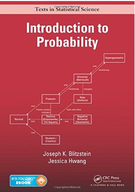A researcher wishes to know whether a new treatment for the disease conditionitis is
Chapter 9, Problem 38(choose chapter or problem)
A researcher wishes to know whether a new treatment for the disease conditionitis is more eective than the standard treatment. It is unfortunately not feasible to do a randomized experiment, but the researcher does have the medical records of patients who received the new treatment and those who received the standard treatment. She is worried, though, that doctors tend to give the new treatment to younger, healthier patients. If this is the case, then naively comparing the outcomes of patients in the two groups would be like comparing apples and oranges. Suppose each patient has background variables X, which might be age, height and weight, and measurements relating to previous health status. Let Z be the indicator of receiving the new treatment. The researcher fears that Z is dependent on X, i.e., that the distribution of X given Z = 1 is dierent from the distribution of X given Z = 0. In order to compare apples to apples, the researcher wants to match every patient who received the new treatment to a patient with similar background variables who received the standard treatment. But X could be a high-dimensional random vector, which often makes it very dicult to find a match with a similar value of X. The propensity score reduces the possibly high-dimensional vector of background variables down to a single number (then it is much easier to match someone to a person with a similar propensity score than to match someone to a person with a similar value of X). The propensity score of a person with background characteristics X is defined as S = E(Z|X). By the fundamental bridge, a persons propensity score is their probability of receiving the treatment, given their background characteristics. Show that conditional on S, the treatment indicator Z is independent of the background variables X. Hint: It helps to first solve the previous problem. Then show that P(Z = 1|S, X) = P(Z = 1|S). By the fundamental bridge, this is equivalent to showing E(Z|S, X) = E(Z|S).
Unfortunately, we don't have that question answered yet. But you can get it answered in just 5 hours by Logging in or Becoming a subscriber.
Becoming a subscriber
Or look for another answer
